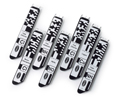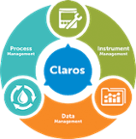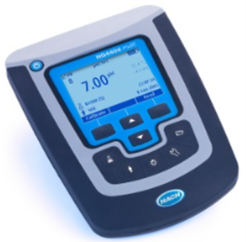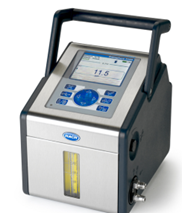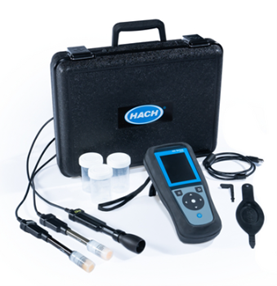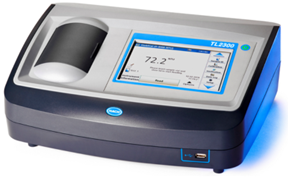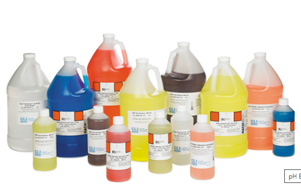-
Products
-
Lab Instruments
Titration Systems Other Instruments
-
Lab Meters and Probes
Calibration Standards Other Meters and Probes
- Chemistries, Reagents, and Standards
-
Online Analyzers
EZ Series Analysers
- Iron
- Aluminium
- Manganese
- Phosphate
- Chloride
- Cyanide
- Fluoride
- Sulphate
- Sulphide
- Arsenic
- Chromium
- Copper
- Nickel
- Zinc
- Ammonium
- Total Nitrogen
- Phenol
- Volatile Fatty Acids
- Alkalinity
- ATP
- Hardness
- Toxicity
- Sample Preconditioning
- Boron
- Colour
- Nitrate
- Nitrite
- Silica
- Hydrogen Peroxide
- EZ Series Reagents
- EZ Series Accessories
- EZ sc Series Inorganics
- EZ sc Series Metals
- EZ sc Series Nutrients
- Flow and Collections
-
Online Sensors and Controllers
Conductivity Sensors
- 3400 Analogue Contacting
- 3400 Digital Contacting
- 3700 Analogue Inductive
- 3700 Digital Inductive
- 9523 Cation Conductivity
- Multiparameter Online Panels
- Claros Water Intelligence System
- Test Kits & Strips
-
Microbiology
Prepared Media
- BARTS
- Liquid MPN
- MUG Tube
- Membrane Filtration
- Paddle Testers
- Presence-Absence
- Total Count Media
- Yeast and Mold
Labware- Accessories
- Funnels, Pumps & Manifolds
- Microbiology Filters
- Petri Dishes & Accessories
- Sampling Bags
- Vials, Tubes, Bottles & Racks
-
Lab Equipment and Supply
ApparatusInstruments Glassware/PlasticwareGeneral Lab Consumables Safety Equipment Books and Reference Material
- Samplers
- Industrial UV
- Electrochemistry
-
Lab Instruments
- Parameters
- Industries
- Support
- Service
- e-Shop
- Brands
Hach Australia
Choose your country or region:
Europe
Americas
Asia - Australasia
- Australia
- Mainland China
- India
- Indonesia
- Japan
- Malaysia
- New Zealand
- Philippines
- Singapore
- South Korea
- Thailand (Thai)
- Taiwan
- Vietnam
Middle East - Africa
Prices Online Include GST 1300 887 735
Wineries
Your Partner for Quality Analysis in Wineries & Distilleries
Hach allows vintners & distillers to ensure product quality, while protecting flavor stability and shelf life. From SO₂ and dissolved oxygen to total package oxygen, you can find a variety of winery & distillery analysis tools at Hach.
Accurate, reliable, and quick measurements for a multitude of parameters ensure that you have all the information you need during the whole wine or spirit production process to make the right decisions.
In the wine industry, maintaining product quality is of utmost importance. At Hach, we offer analytics solutions that are specifically designed for the wine industry, providing accurate, reliable, and quick measurements for a multitude of parameters. Our wine industry solutions cover everything from turbidity measurements to dissolved oxygen and trade waste.
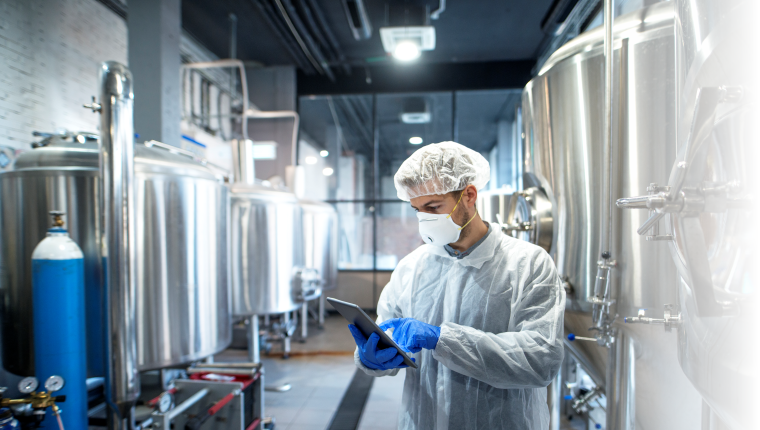
Assure product quality, protect your brand
- Maintain product quality by controlling DO levels
- Increase shelf life and flavor consistency with efficient turbidity measurements
- Get complete traceability with automated titration
- Portable, Laboratory or Process - we’ve got you covered!
View Featured Products
HQ1130
The HQ1130 Portable Dissolved Oxygen Meter provides a true rugged, field-ready solution with on-screen, visual step-by-step operating guidance that provides users with confidence in reporting and managing their results. Unlike other field meters with basic user interfaces and without easily accessible data, the HQ Series secures, simplifies, and accelerates the complete measurement process for field users.
- O2 probe usable on your bottles and tanks
- Easily collect, manage, and view your data
- Step-by-step visual instructions on screen
- Robustness guaranteed with an IP67 rating
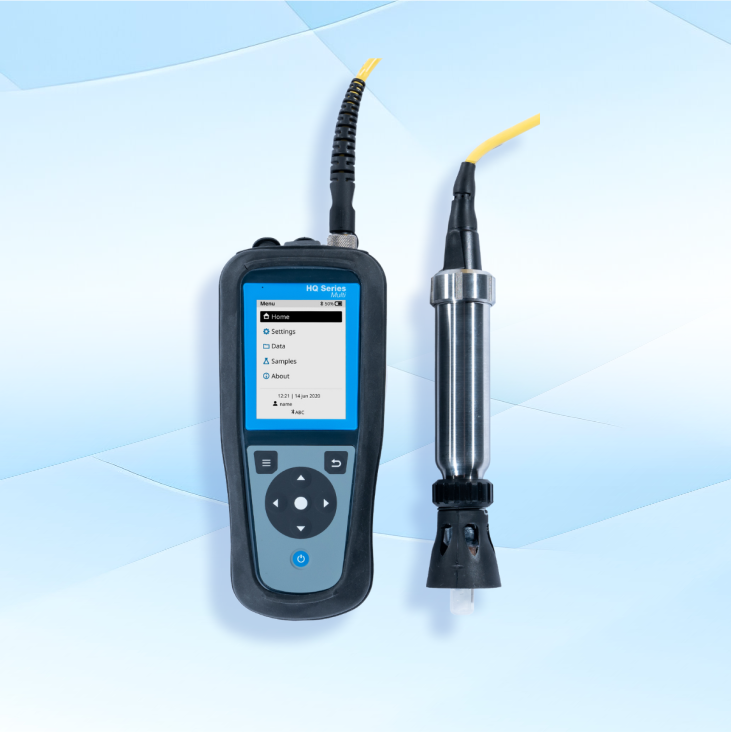
TL23 Bench-top Turbidimeters
The TL23 Series benchtop turbidimeters combine Hach’s trusted technology with enhanced features like
- Intuitive user interface via a color touchscreen
- Guided procedure for reliable results
- Data transfer via USB port
With ratio technology, the TL23 is ideal for measuring turbidity in a wide range of industrial and other samples, minimizing interference from large particles and color.
Shop Now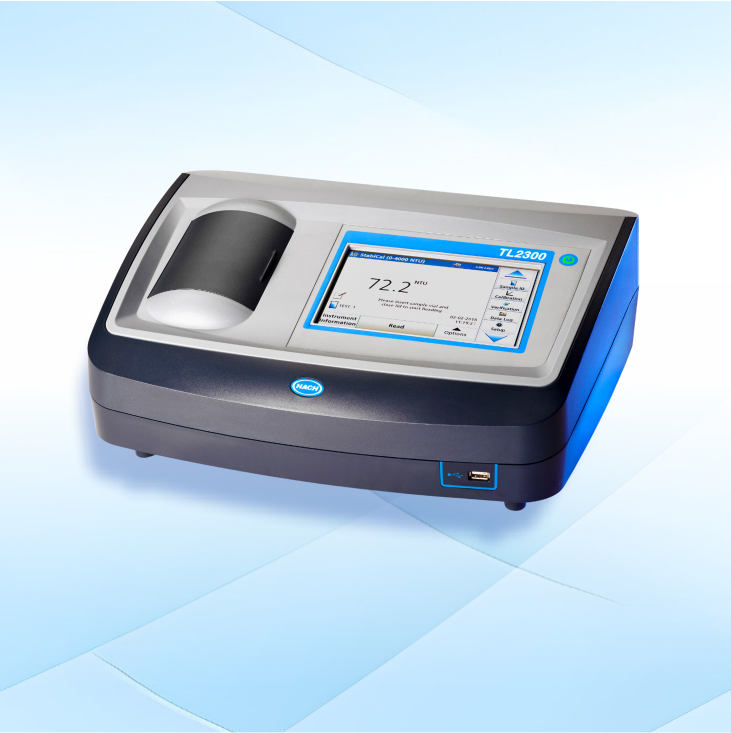
2100Q Portable Turbidimeter
The Hach 2100Q Portable Turbidimeter delivers exceptional ease of use and accuracy with advanced features, including simple calibration, rapid data transfer via USB, and a unique optical system for reliable field measurements.
- Fast and accurate measurements
- Suitable for field use
- Intuitive instructions
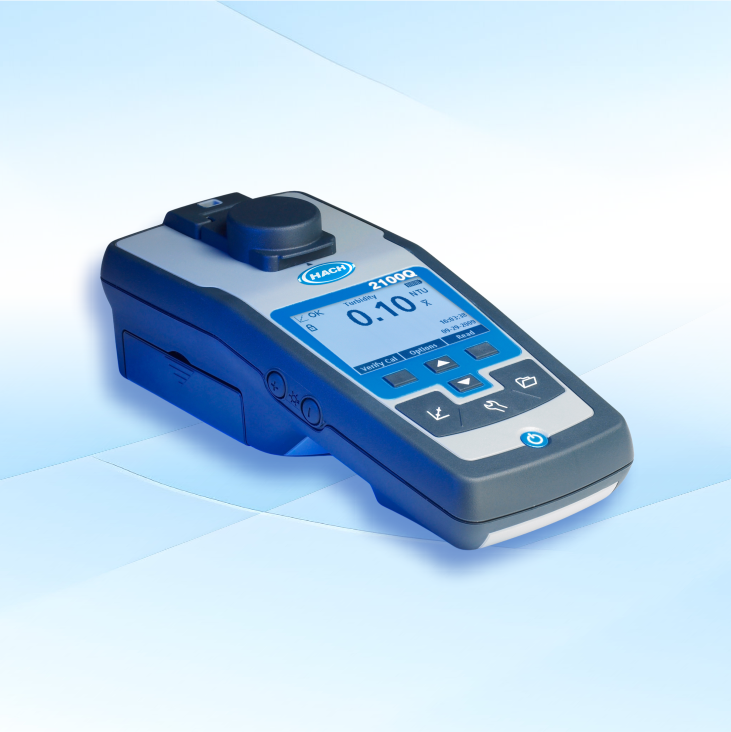
AS1000
The Titralab AS1000 series, when used with AT1000 Series titrators, automates sample handling with rotating and lifting modules, integrated stirring, and dedicated rinsing positions. Fully PC-controlled via TM1000 software, it ensures precise and efficient analysis across various aqueous samples, enabling complete automation and freeing up valuable time by eliminating the need for manual intervention.
- Easy to use and automated
- Guaranteed reliability and accuracy of measurements
- Customizable measurements for your application (free and total SO2 and/or pH, total acidity)
- Can be paired with a dispenser to increase titration throughput
- Reduced investment and reagent consumption (cost-effective)
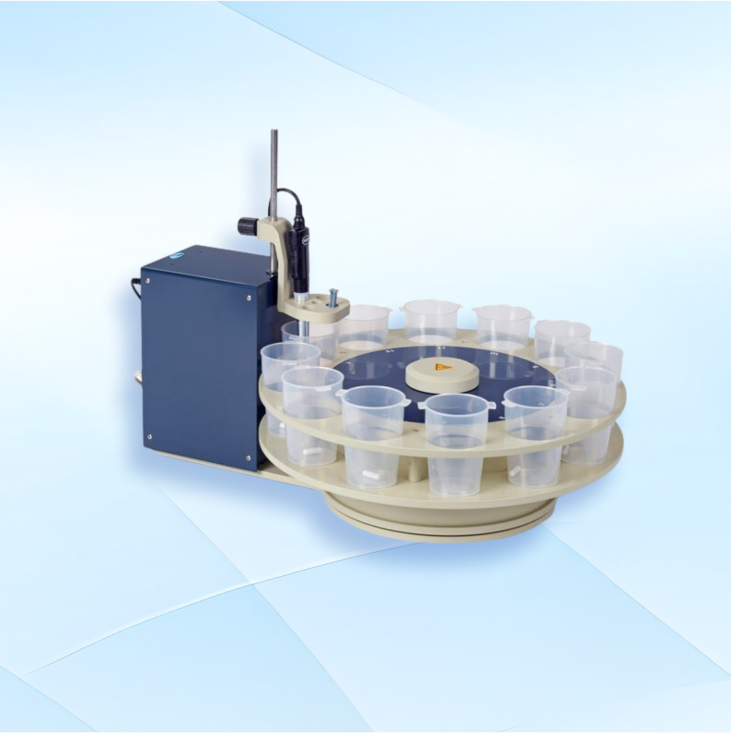
Explore Elechtrochemistry Meters
Explore Hach Wine & Spirit Analysis Products
The AT1000 Titrator Series provide automated titration for accurate and repeatable measurement with complete traceability. Safe to use, these titrators require minimal reagent contact without color indicator. Use beverage application packs to test multiple beverage parameters on one instrument, including Total Acidity, pH, and SO2.
Shop NowThe 2100Q portable turbidimeter provides convenient data logging. Up to 500 measurements are automatically stored in the instrument for easy access and backup.
Shop NowTake the guesswork out of measurements with Hach HQD laboratory meters. All HQD meters feature an advanced yet simple user interface that does not require manuals or training to operate.
Shop NowOrbisphere 3100 Portable Oxygen Analyser
The Hach Orbisphere 3100 Portable Oxygen Analyser ensures measurement accuracy in detecting small or large oxygen pick-ups across the fermentation. It's built to travel with you, measure where you need it most, and can handle the extremes you encounter in your everyday wine production processes. Rely on the Orbisphere both for spot checks of in-line instrumentation and for overall DO control in your winery.
Shop NowHQ Meter and Probe for portable pH measurements
Maintain a more consistent flavour profile by measuring pH levels throughout the production process.
Shop NowChoose from a broad selection of Intellical probes to meet your most demanding laboratory and field applications, for parameters such as pH, Dissolved Oxygen (DO), Conductivity, and more.
Shop NowThe TL23 Series ensures stable readings and accurate analysis by capturing turbidity readings once the device detects sample stability. This quality step removes subjectivity and the need for repeated measurements.
Shop NowHach calibration pH buffers are available in a variety of color-coded or colourless solutions, in different packaging types and sizes from 15 mL up to 20 L.
ISO17034:2017 Certified Reference Material available now!
Shop NowPortable, Laboratory or UV-VIS, Hach has most reliable Spectrophotometers to help you maintain regulatory compliance.
Shop NowHach ® has optimized colorimetric technology by offering highly accurate and efficient portable solutions to analyze such key water quality parameters.
Shop Now
Frequently Asked Questions
Why do we measure dissolved oxygen in wine?
A bottle of wine’s oxygen content has a great effect on its quality, stability, and longevity. Therefore, monitoring and controlling the oxygen incorporation at different stages of the winemaking and bottling process is becoming a growing concern for wineries. While dissolved oxygen is a part of the wine’s natural aging process, it can also be detrimental, causing oxidation that damages equipment and compromises product. Wine Producers maintain low DO content to prevent oxidation, loss of aroma, discoloration, rapid aging, and the growth of microorganisms. Read more about dissolved oxygen: Here
How are titrations used in the wine industry?
Titrators have multiple use in the wine industry. Acidity, for example, has an impact on taste and is an indicator of product quality. The titrator determines here pH and Total Acidity.
- Acid titrations measure wine's acidity, important for flavor and stability. Total acidity is commonly measured, combining tartaric, malic, and citric acid levels.
- SO2 titrations measure SO2 levels in wine, commonly used preservative to prevent oxidation and microbial growth. It ensures safe and legal limits of free and total SO2 concentrations.
- Alkalinity titrations: Titrations can be used to measure the alkalinity of water used in winemaking. High alkalinity can affect the pH of the wine and lead to undesirable flavors.
- Sugar titrations: Titration methods can be used to measure the sugar content of wine, which is important for determining the wine's final alcohol content.
Users of Hach AT1000 are not in direct contact with reagents. In addition, AT1000 titration methods do not use potentially dangerous color indicators, e.g., Phenolphthalein (CMR classified). The titrator AT1000 from Hach provides the ability to measure other additional parameters with one device, including Alkalinity (TA/TAC), Salt, and Free & Total SO₂ in wines.
How do you measure turbidity in wine?
Most common practice in wineries to measure turbidity is with a portable or benchtop turbidimeter. All turbidimeters have different operating requirements, so it is important to check the instructions before use.
Nonetheless, most turbidimeters follow the same general procedure for benchtop or portable units:
- Uncap a clean vial and fill it with the unfiltered water sample you wish to measure. Be sure to stir the sample by inverting the container before pouring it into the measurement cell to kick up particles that may have settled, but without creating air bubbles.
- Tighten the cap on the sample cell (or measurement cell) and hold it by the cap.
- Wipe away any excess liquid, dirt, or finger markings from the cell with a soft lint-free cloth before measuring.
- Place the turbidimeter on a flat surface.
- Turn on the device.
- Set the automatic range.
- Select signal averaging.
- Put the cell into the measurement compartment of the turbidimeter.
- Close the compartment lid.
- Select the “Read” button, which should give you a measurement in NTU
For more information, visit: au.hach.com/parameters/turbidity
What is a portable turbidimeter?
Turbidimeters, also called turbidity meters, are instruments used for measuring the turbidity of liquids. The turbidity of a sample is proportional to the intensity of the light reflected by particles in the water.
A portable turbidimeter is a handheld device used to measure the turbidity, or the degree to which water loses its transparency due to the presence of suspended particles, in a liquid sample. It typically consists of a light source that shines light through the sample and a detector that measures the amount of light scattered by the suspended particles. Portable turbidimeters offer convenient measurements in the field, throughout your production plant and are commonly used in water treatment plants, laboratories, and field settings to monitor the quality of drinking water, wastewater, and other liquids, such as soft drinks, wine and other alcoholic beverages.
Check out our portable turbidimeters here: au.hach.com/portable-lab-turbidimeters
Do you have pH Buffers compliant with DIN EN ISO 17034:2017?
For critical applications and metrology needs, Hach offers Certified Secondary pH Standard Reference Buffer Solutions and Certified Conductivity Solutions. These Certified Reference Material (CRM) in accordance with DIN EN ISO 17034:2017 report the exact pH buffer value or conductivity with related expanded uncertainty (k=2). These pH buffer CRM are available in a wide range of values and offer a unique extended shelf-life period thanks to a premium airtight aluminium packaging.
Check out our pH Buffer solutions here: au.hach.com/calibration-standards/ph-buffers/family?productCategoryId=22218659513





 Recurring Orders
Recurring Orders 
